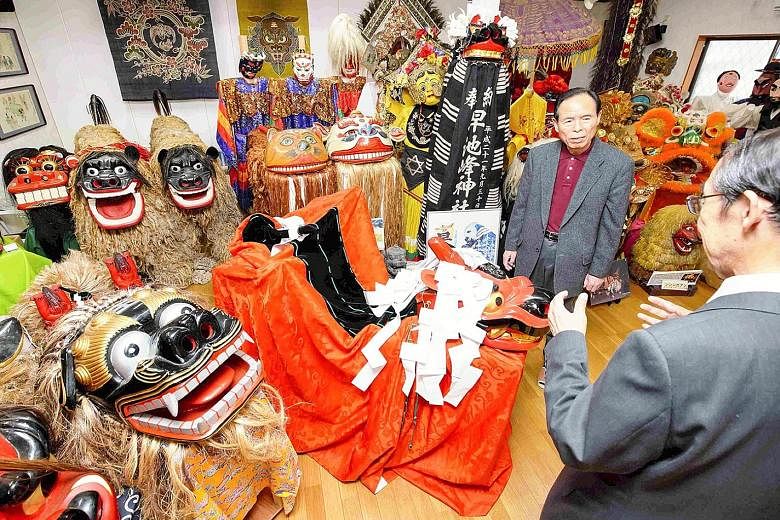SHIRAOKA (Japan) • This museum in Shiraoka, Saitama prefecture, looks like an ordinary house from the outside.
However, when visitors enter, it is like a pack of lions are staring with round eyes, their big mouths open.
On display are more than 2,000 items related to shishimai - or lion dance in Japanese - that museum operator Yuichi Takahashi, 70, has collected from across Japan and abroad over about 40 years.
The Shishi Museum is a private museum operated by Mr Takahashi. He opened a small exhibit space in his reception room in 1988. Five years later, he opened the museum behind his house.
Shishi - or lion in Japanese - is the king of beasts. In ancient Oriental civilisations, lions were considered guardian deities, but they were also harmful animals that attacked livestock. Shishimai may have originated from a depiction of the defeat of a wild lion.
The notion of the lion was introduced to East Asia, where lions did not exist, and records show that shishimai was being performed in China by the third century at the latest. In Japan, shishimai was part of gigaku, a dance and music performance introduced in 612.
According to Mr Takahashi, shishimai is performed at about 7,500 locations in all 47 prefectures in Japan as a guardian deity of each community.
The general idea is the same - a lion walks around the area conducting purification rituals and performs at the plaza. However, the number of people involved in the dance and the design of the shishi vary from region to region.
For example, a lion's head displayed at the museum from Haramamuro district in Konosu, Saitama prefecture, is a shiny blue and white, featuring the tail feathers of Totenko Japanese red crowers and Tomaru Japanese black crowers.
In the museum, visitors can also see various foreign shishi that Mr Takahashi has collected. There are colourful lion heads, all of which have different faces, from the Himalayan kingdom of Bhutan, given to him by a group that came to Japan in 2007.
"Shishimai in Japan is based on a simple belief, not a specific religion or sect," Mr Takahashi said. "There may be a guardian deity in your town that is rooted in the area."
The museum is a five-minute walk from Shiraoka Station on the JR Utsunomiya Line, or about 15 minutes by car from the Kuki Interchange of the Tohoku Expressway.
YOMIURI SHIMBUN/ASIA NEWS NETWORK

